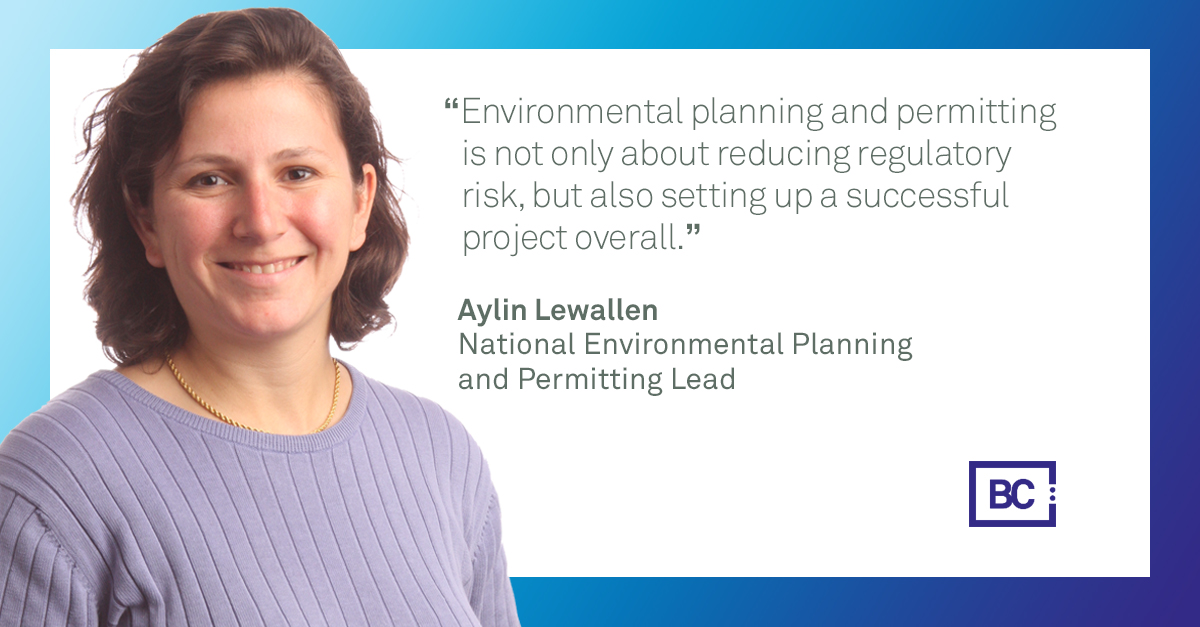Earlier this month, the EPA and Army announced opportunities for the public to provide their experiences and views to help revise the definition of the Waters of the United States (WOTUS) rule. Through the end of this month, the EPA will be holding public meetings for interested stakeholders and will be accepting written recommendations through Sept. 3. Through this interactive process, the agency hopes to create a revised definition of WOTUS that reflects the experiences of all communities.
This month also brought newly proposed greenhouse gas (GHG) emissions standards for passenger cars and light trucks. These new standards would help set the course towards long-term reductions of GHG and other harmful pollutant emissions from highway transportation.
Other compliance news to keep an eye on:
Ask an Expert: Environmental planning and permitting
Environmental planning and permitting (EPP) is more than considering protected species and habitats or simply checking off the box for a permit. In this month’s feature, BC subject matter expert Aylin Lewallen discusses how a strategic approach to EPP can reduce unwanted surprises and benefit the overall project. Read “Ask an Expert”
NPDES compliance in the spotlight
In an effort to help the EPA reach its goal of reducing by half National Pollutant Discharge Elimination System (NPDES) noncompliance by the end of fiscal year 2022, the Government Accountability Office recently provided recommendations that would help better assess and disclose the quality of NPDES compliance and enforcement data. The EPA also initiated its Smart Sectors Program to collaborate with industry sectors and develop creative solutions.
PFAS persistent topic among potential regulations
EPA’s latest list of 66 drinking water contaminants considered for potential regulations includes PFAS, which are identified as agency priorities and contaminants of concern for drinking water. This action is in keeping with the agency’s commitment to better understand and ultimately reduce the potential risks caused by PFAS. The agency is seeking comments on the draft list and process used to select the contaminants.



 Environmental planning and permitting, or EPP, is a mindset of doing the right thing for the natural environment while also complying with regulations. It’s more a balance between the natural elements and how they fit within the overall project delivery and overarching regulatory framework than simply checking off the box for a permit.
Environmental planning and permitting, or EPP, is a mindset of doing the right thing for the natural environment while also complying with regulations. It’s more a balance between the natural elements and how they fit within the overall project delivery and overarching regulatory framework than simply checking off the box for a permit.